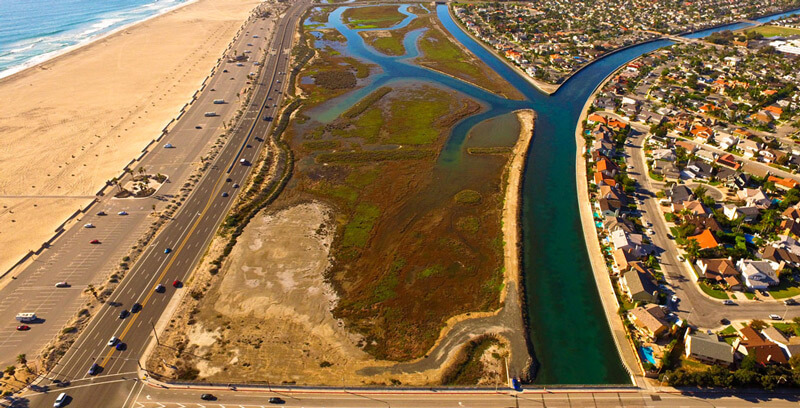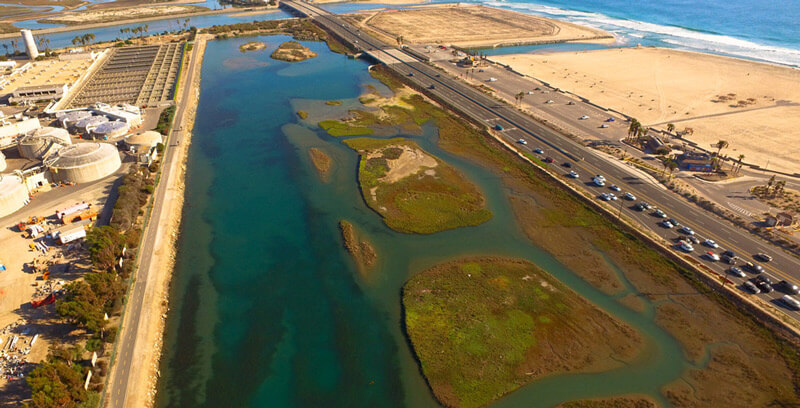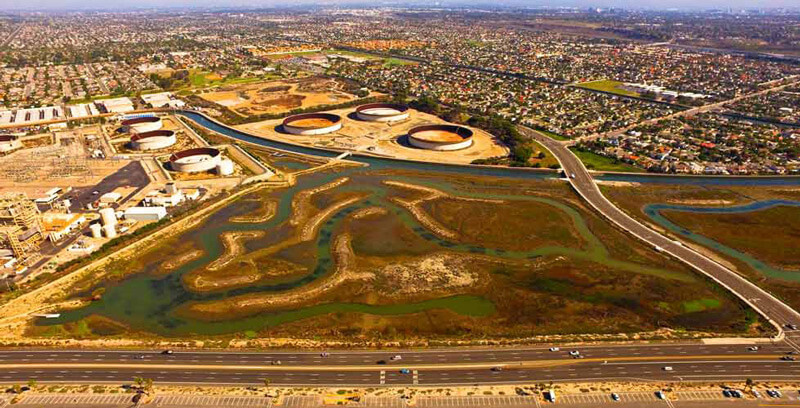What We Do
Talbert Marsh
Talbert Marsh offers the public a walking and biking trail on the north perimeter of the 25 acre marsh from Brookhurst Street to the Santa Ana River Trail. Over 90 species of birds have been observed at Talbert Marsh and the other adjoining Huntington Beach wetlands. In addition to year-round residents, thousands of migratory birds use our as a rest stop along the Pacific flyway from their nesting grounds in the north to their southern wintering grounds.
The water in the marsh is mostly seawater entering from the ocean inlet crossing under Pacific Coast Highway. Twice daily, water flows in and out with the tide, rising and falling as much as 7 feet. During winter rains, fresh water also washes down storm drain channels helping to filter the dirty water before it reaches the ocean.
In 1989, the man-made dike separating the degraded wetlands from the flood control channel was breached and tidal action was restored. Almost immediately, the wetlands began the process of healing itself.

Click Image to Enlarge
Brookhurst Marsh
Brookhurst Marsh consists of approximately 62 acres between Brookhurst and Magnolia Streets. Restoration of this marsh began in September 2008 and was completed in March 2009.
Magnolia Marsh
Magnolia Marsh is located between Magnolia Street and the AES power plant and is approximately 40 acres. Restoration of the marsh began in April 2009, and re-creation of the historical marsh channels and restoration of full tidal influence were completed in March 2010.
Public access and education were a critical part of this restoration. A raised observation deck now extends out over a tidal pond, and a boat dock for maintenance boat access. Both are a short walk from our Interpretive Center. Interpretive signage was installed in June 2016, and a trail system is planned which will extend around the perimeter of the marsh.
Newland Marsh
Newland Marsh The 44-acre Newland Marsh is located along Beach Boulevard and Pacific Coast Highway, and extends behind a mobile home park all the way to Newland Street. The property is our newest and last land acquisition which closed in 2021. The next steps will require about 4 -5 years to secure the necessary funds, obtain the appropriate permits, prepare the engineering, plans & specifications and complete the restoration.


